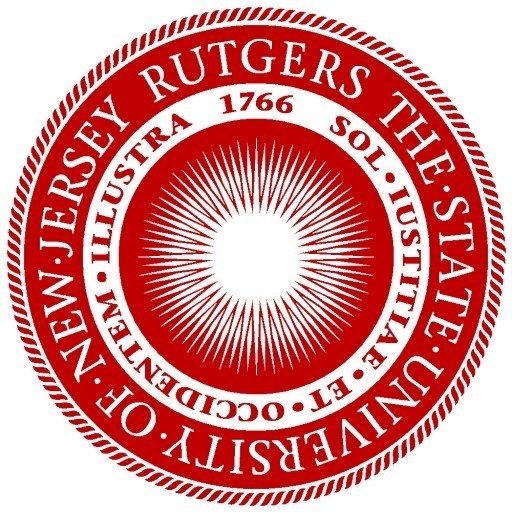Photos of university / #dukeuniversity
The Visual and Media Studies program at Duke University offers students a comprehensive curriculum that explores the dynamic and ever-evolving fields of visual culture, media production, and digital communication. This interdisciplinary program combines theoretical analysis with practical skills, enabling students to critically examine the role of images, media technologies, and visual artifacts in contemporary society. Through a rigorous course of study, students engage with topics such as film and media theory, digital media production, photography, animation, and contemporary visual arts. The program emphasizes both historical context and innovative practice, encouraging students to develop a nuanced understanding of how visual media influence cultural and social dynamics. Students have the opportunity to work with cutting-edge tools and technologies, including video editing software, digital cameras, and interactive media platforms, preparing them for careers in media production, visual arts, communication, and related industries. The program also fosters critical thinking and analytical skills by involving students in research projects, exhibitions, and media critiques. With access to Duke’s extensive resources, including specialized labs and libraries, students can pursue individual interests and collaborative projects that reflect current trends and future developments in the visual and media fields. Faculty members bring a wealth of expertise from diverse disciplines such as art history, film studies, media studies, and digital humanities. Graduates of the program are equipped to analyze and create visual content with both artistic intention and an understanding of cultural impact, making them well-prepared for professional roles in media, arts administration, digital communication, and academia. The program’s vibrant intellectual community and focus on innovative media practices make it an ideal place for students passionate about exploring the power of images and media in shaping our world.
The Master of Arts in Historical and Cultural Visualization at Duke University offers a comprehensive interdisciplinary program designed to explore the ways in which history and culture can be communicated through innovative visual means. This program combines rigorous academic coursework with practical skills in visual storytelling, digital technologies, and interpretive methodologies to equip students with the ability to create compelling visual narratives that highlight historical and cultural contexts. Students will engage with a diverse array of topics including art history, digital humanities, media production, and cultural theory, gaining a nuanced understanding of how visual representations influence public understanding of history and culture.
The curriculum emphasizes both theoretical foundations and hands-on experience. Students will learn to analyze historical images, interpret cultural symbols, and utilize modern digital tools such as data visualization software, graphic design programs, and multimedia production platforms. The program encourages collaborative projects, allowing students to work with faculty and peers on real-world projects that demonstrate the power of visual storytelling in museums, archives, educational platforms, and public history initiatives.
Throughout the program, faculty experts guide students through critical analysis and creative production, fostering skills in research, visual analysis, and media ethics. The interdisciplinary nature of the program attracts students from diverse academic backgrounds, including history, art, anthropology, digital media, and communication. Graduates of this program will be prepared for careers in museum curation, cultural institutions, digital media, academia, and public history, where visual communication plays a central role in engaging audiences and promoting cultural understanding. With a focus on innovative practices and cultural sensitivity, the program aims to develop a new generation of visualization professionals capable of bridging historical scholarship and public dissemination through powerful visual narratives.
The Bachelor of Arts in Historical and Cultural Visualization at Duke University requires students to complete a comprehensive curriculum designed to develop their skills in representing historical and cultural data through visual means. The program mandates the completion of foundational courses in history, visual studies, and data analysis, encouraging students to gain a multidisciplinary perspective. Students must fulfill core requirements including courses in digital visualization, media theory, and historical methodology, which provide them with both theoretical frameworks and practical skills. Advanced coursework involves projects that involve creating visual narratives, interactive exhibits, and digital reconstructions of historical sites and events. The program also emphasizes the development of technical skills such as graphic design, 3D modeling, and information visualization software. In addition to coursework, students are expected to undertake a capstone project that synthesizes their learning and demonstrates their ability to produce compelling visualizations of historical and cultural phenomena. The program incorporates internships and collaborative projects with museums, cultural institutions, or technology companies, enabling students to apply their skills in real-world contexts. Elective courses allow specialization in areas such as digital archiving, visual ethnography, or augmented reality applications. Students are encouraged to participate in seminars, workshops, and conferences hosted by the department to stay abreast of current trends and innovations in the field. Overall, the program is designed to produce graduates proficient in both historical research and advanced visualization techniques, prepared for careers in education, curation, digital media, or further graduate study. The typical duration for completing the program is four years, and students must maintain a minimum GPA as specified by university policies. Continuous advisement throughout the program ensures students meet all academic requirements and gain relevant industry experience.
The Financing studies for the Master of Arts in Historical and Cultural Visualization at Duke University encompass a comprehensive approach to supporting students financially throughout their academic journey. Duke University offers a range of funding opportunities, including fellowships, assistantships, scholarships, and loans, aimed at alleviating the financial burden of graduate education. Tuition fees for this program are consistent with Duke’s graduate tuition rates, and detailed information can be obtained from the university’s official financial aid office. Many students pursue research or teaching assistantships, which provide both financial support and valuable academic experience, often covering tuition and offering stipends. Additionally, the university offers merit-based fellowships and departmental scholarships specifically targeted at students in visual studies and related disciplines. Prospective students are encouraged to submit the Free Application for Federal Student Aid (FAFSA) to explore federal loan options, although most funding for this specialized program comes through university-administered awards. Duke University’s financial aid packages are designed to be competitive and comprehensive, often combining multiple sources of support to meet the full cost of attendance. International students may have access to similar funding opportunities, though they are advised to consult the university’s international student services for specific guidance. External funding sources, such as private foundations or cultural heritage organizations, can also be pursued by students seeking additional financial assistance. All applicants are encouraged to carefully review the financial aid deadlines and application procedures provided on Duke’s official website to maximize their chances of securing funding. The university is committed to fostering an inclusive academic community and strives to support students financially so they can fully engage with the program’s academic and research opportunities.
The Program in Historical and Cultural Visualization at Duke University is an interdisciplinary academic offering designed to equip students with the skills and knowledge necessary to analyze, interpret, and communicate history and culture through visual means. This program integrates elements from history, art, design, and media studies to foster a comprehensive understanding of how visual representations shape our understanding of the past and cultural identities. Students learn to critically examine visual artifacts, including photographs, films, digital media, maps, and other visual sources, applying theoretical frameworks and analytical techniques to interpret their significance. The curriculum emphasizes both historical context and modern visualization technologies, enabling students to develop skills in data visualization, graphic design, and digital storytelling, essential for careers in museums, archives, media, education, and cultural preservation. The program often includes practical training through workshops, internships, and collaborative projects with cultural institutions, providing real-world experience. Graduates are prepared to pursue careers as museum curators, cultural analysts, digital archivists, media producers, or continue advanced study in fields related to history, visual arts, or digital humanities. The program encourages an innovative approach to learning, with faculty comprising experts in history, art history, media studies, and visualization. Through seminars, lectures, and hands-on projects, students deepen their understanding of the interplay between visual culture and societal values, fostering critical thinking and visual literacy required in the contemporary digital age. The program also promotes research opportunities, allowing students to engage in original projects that contribute new perspectives to the field of visual history and cultural representation. Overall, the Duke University program offers a unique combination of historical depth and technical skill development, preparing students to become insightful interpreters and creators of visual cultural narratives.







